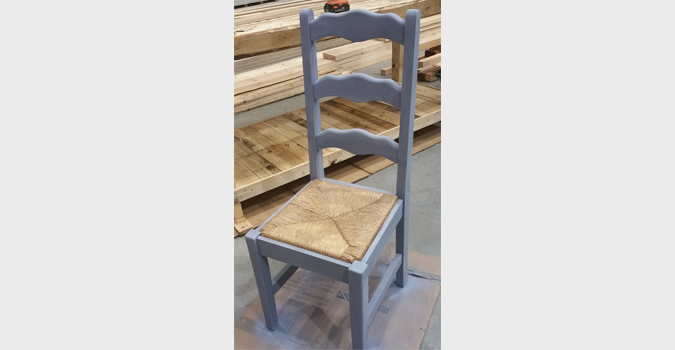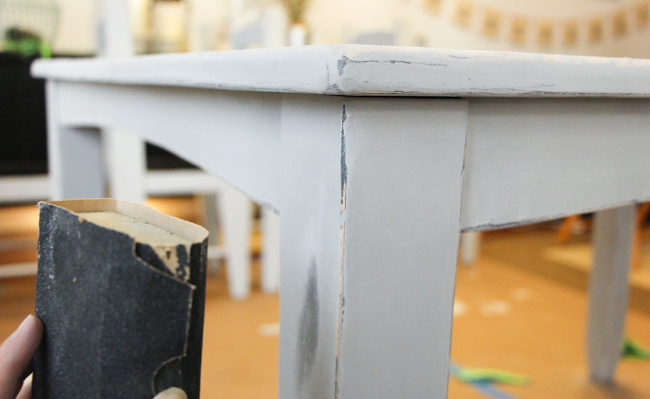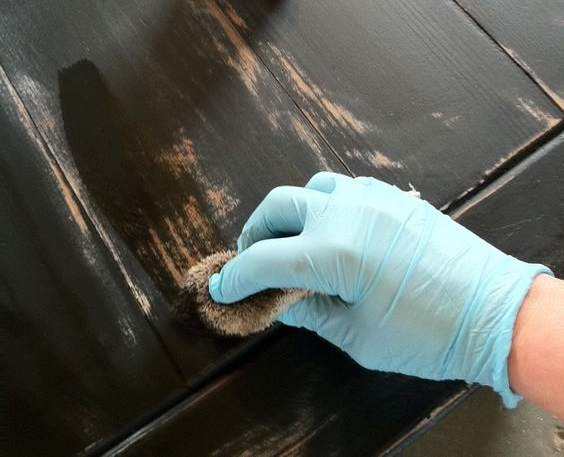. This revolutionary chalk spray paint has completely changed the steps needed to give furniture, ornaments and even nans centuries old wooden rocking horse a new lease of life, so that you can indeed flog a dead horse.
It has cut preparation time by half or more and also eliminated the need to possess any decorating skills or expensive tools. Take a look at this quick guide and you will discover that all you really need is a can of
and a little imagination.
For this test, I decided to repurpose an old solid wood chair. Now I have mentioned that it is solid wood because strictly speaking, before I ever used the chalk paint, you would have had to sand the chair down for 2 reasons.
(1) To even the surface out. This could have been done by hand, but would require a lot of time and effort. Alternatively you could use a power sander but again it requires you to either own or buy one as well as needing the knowledge of how to operate one.
(2) Notice that the chair has a deep seated wood colour. In some cases with light paints it is quite challenging to completely conceal. Traditionally after sanding a primer would be applied and allowed to dry before applying a colour coat in order to bring it to life. With the Pinty Plus chalk paint there is absolutely no need for either step.
If you have already tried your hand at repurposing furniture or more so are an expert carpenter then you will already know that spray paints don't have a tendency to take well to gloss veneer finishes.
Not the case with chalk spray paints.
How To Apply Chalk Spray Paint
You will quickly develop your own favourite techniques that create stunning, beautiful, vintage effects.
Step 1) Ensure that the workpiece is clean of grease, dust and oils. It is advised to use
general purpose latex gloves to prevent hand marks.
Microfibre cloths are great all purpose cloths that can be used around the house. The cloths effectively trap and micro particles of dirt. Soak with some water for a better clean.
Step 2) Dry off the workpiece. Ensure that there is no residual water or cleaner on the workpiece before proceeding.
Step 3) Start spraying: Before you do start spraying if you are working in a garage or internally it is advisable to lay ground and wall protection to prevent paint staining important items. If outside, the paint is water based so it is environmentally friendly to plants and flowers. Start spraying by holding the nozzle of the can approximately 25cm from the workpiece. Spray in short fast layers.
Pinty Plus recommend that you spray your layers horizontally first and then vertically second to give a uniform finish and avoid drips.
I will admit, that we didn't follow the horizontal vertical rule, simply because the shape of the chair didn't particularly lend itself to this technique. Regardless of that the results were still amazing, especially after a single coat!
Check out our video on how we sprayed the chair. You can see the we followed the
25cm distance rule and still got a uniform finish.

Distressing & Sanding For A Vintage Look
Start by spraying the object in question. Whether you choose a single colour or a mixture is entirely up to you. It is always good to be creative, so we definitely encourage you to think outside of the box. Leave the chalk spray paint to dry for about 15-20 minutes, and then rub gently with a damp cloth to remove any dust particles. With fine
120 grit sandpaper rub the corners, edges and details to reveal the original colour, or alternatively spray two coats and let dry, then rub to reveal the undercoat colour.

Rubbing
Rubbing is another well known technique for creating distressed vintage looks. It's quite simple really, spray the workpiece and while the paint is drying use your fingers or palms to rub a desired area in order to create the appearance of wear. Even though the paint is water based and is safe to touch, you can use gloves while hand rubbing or for more consistent results in timbers, use a wet cloth to rub along the grains for a real grain effect.
